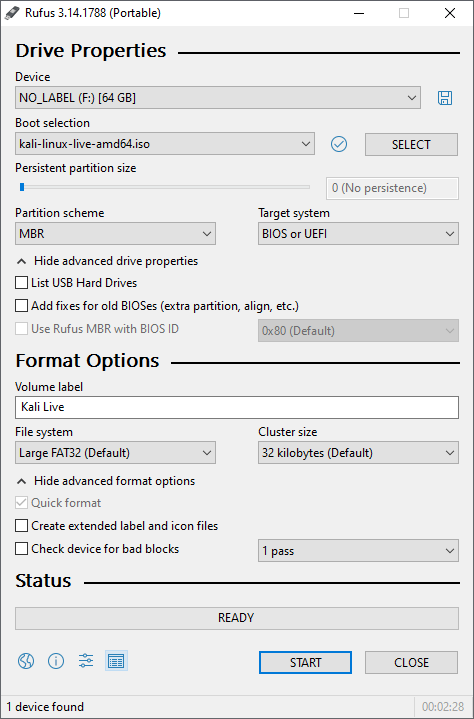

- LINUX ISO FILE TO BOOTABLE HARD DRIVE HOW TO
- LINUX ISO FILE TO BOOTABLE HARD DRIVE ARCHIVE
- LINUX ISO FILE TO BOOTABLE HARD DRIVE DOWNLOAD
- LINUX ISO FILE TO BOOTABLE HARD DRIVE FREE
Set isofile=” /home/name/Downloads/ ubuntu-14.04.1-desktop-amd64.iso” Here’s how you can boot an Ubuntu or Ubuntu-based distribution from an ISO file. You’ll need to add one or more ISO-booting sections to the file below the commented lines. Unless you’ve added other custom boot entries, you should see a mostly empty file. For example, you could replace “gedit” with “nano” in the command to open the file in the Nano text editor.
LINUX ISO FILE TO BOOTABLE HARD DRIVE FREE
On Ubuntu, you can do this by opening a Terminal window and running the following command:įeel free to open the file in your favorite text editor. You’ll need to open the /etc/grub.d/40_custom file for editing with root privileges. It’s designed to be automatically generated from settings you specify in other files. After editing the file, the contents of your /etc/defaults/grub file and the /etc/grub.d/ scripts will be combined to create a /boot/grub/grub.cfg file - you shouldn’t edit this file by hand. This file is designed for user-added custom boot entries.

The easiest way to add a custom boot entry is to edit the /etc/grub.d/40_custom script. For example, below we can see the system partition is /dev/sda1 - so that’s (hd0,1) for GRUB. You’ll see a list of Linux device paths, which you can convert to GRUB device names on your own. On Ubuntu, open a Terminal and run the following command: You can use the fdisk -l command to view this information. For example, (hd3,6) refers to the sixth partition on the fourth hard disk.

In other words, in a GRUB device name, the disk numbers start counting at 0 and the partition num6ers start counting at 1 - yes, it’s unnecessarily confusing. The 0 means the first hard disk, while the 1 means the first partition on it. In GRUB, (hd0,1) is equivalent to /dev/sda0. On a Linux system, /dev/sda1 is the first partition on the first hard disk - a means the first hard disk and 1 means its first partition. GRUB uses a different “device name” scheme than Linux does. You’ll need to know their location inside the ISO file later.ĭetermine the Hard Drive Partition’s Path If you’re using a Ubuntu ISO file, you’ll find these files inside the casper folder - the vmlinuz file is the Linux kernel and the initrd file is the initrd image. Locate the kernel file and the initrd image.
LINUX ISO FILE TO BOOTABLE HARD DRIVE ARCHIVE
In the Nautilus file manager, right-click the ISO file and select Open with Archive Manager. For example, you can do this by opening the ISO file with the Archive Manager/File Roller graphical application that comes with Ubuntu and other GNOME-based desktop environments. You may need to look inside the ISO file to determine exactly where specific files are.

Many Linux-based bootable utility discs should also work.
LINUX ISO FILE TO BOOTABLE HARD DRIVE DOWNLOAD
if you want to use them in a live environment without installing them to your hard drive, be sure to download the “ live CD” versions of each Linux ISO. Sorry, you can’t boot a Linux ISO file directly from a Windows system using the Windows boot loader.ĭownload the ISO files you want to use and store them on your Linux partition. Your computer must be using the GRUB2 boot loader, which is a standard boot loader on most Linux systems. This trick requires you have a Linux system installed on your hard drive.
LINUX ISO FILE TO BOOTABLE HARD DRIVE HOW TO
RELATED: How to Configure the GRUB2 Boot Loader's Settings


 0 kommentar(er)
0 kommentar(er)
